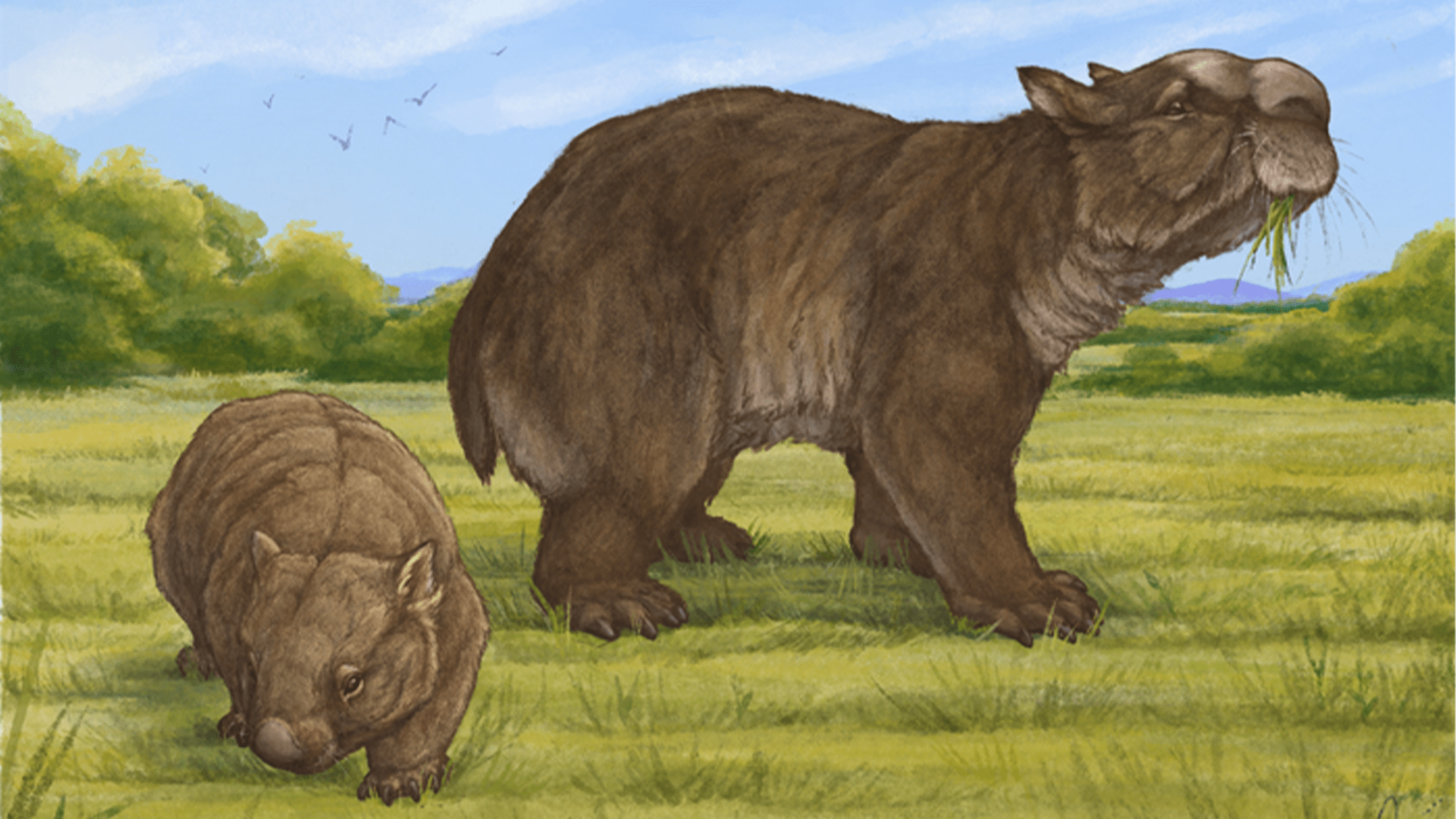

Australia and the Oceania region in general are known for beautiful beaches, rugged terrain, and incredible biodiversity. Australia itself is home to over one million species of plants and animals, and between 600,000 and 700,000 species that aren’t found anywhere else on planet Earth, according to the Australian Department of Climate Change, Energy, the Environment, and Water.
It also used to be an even bigger ecological playground. Roughly 80,000 years ago it was also home to extinct megafauna, or giant animals similar to ones found today that once lived in the country’s forests and plains. That includes giant wombat relatives. However, there has been a bit of a wombat relative identity crisis occurring in the study of these marsupials.
[Related: Giant beasts once roamed Madagascar. What happened to them?]
Remains of the extinct Diprotodon are commonly believed to be Australia’s “giant wombat,” but it isn’t the closest wombat relative since it belongs to the family Diprotodonidae and not Vombatidae. But new research published Monday in the journal Papers In Paleontology details the discovery of the remains a true giant wombat relative Ramsayia magna.
Extinct giant wombats of the family Vombatidae are a more rare find that than the fossilized Diprotodon specimens, which may be why the species has been overlooked as the true wombat relative. They share some similar traits to the present-day marsupial, but this new find suggests that Ramsayia magna is the closer ancestor to the wombat.
“The extinct megafauna of Australia never ceases to amaze and intrigue not just Australians, but people all over the world,” said co-author and associate professor Julien Louys from Griffith University’s Australian Research Centre for Human Evolution, in a statement. “Although one of the most charismatic of the giant mammals to go extinct, Diprotodon is commonly referred to as a ‘giant wombat’. But this is incorrect as Diprotodon belongs to an entirely different family- equivalent to saying a hippo is just a giant pig.”
The discovery of a mostly complete skull of the poorly understood species Ramsayia magna helped the team reconstruct what the animal looked like, when it lived, and where it roamed in Australia.
[Related: This is the most-complete woolly mammoth ever found in North America.]
The Ramsayia magna cranium and mandible (lower jaw) fossil were discovered in Lower Johansons Cave in Rockhampton, Queensland, Australia in the early 2000s. Subsequent excavations in the cave and analysis by the team on this study confirmed that it belonged to this elusive megafauna species. The specimen had extensive cranial sinuses, which had not been previously reported for a giant wombat.
“This indicates that the wombat had a large, rounded skull for the attachment of specific and strong chewing muscles,” said Louys. “The giant wombat also possessed a ‘premaxillary spine’, an indication that it had a large, fleshy nose. In this paper, we show that all true giant wombats evolved large body sizes first, then individually became quite specialized to eat different types of grasses.”
The paper also dates this species for the first time. At 80,000 years-old, this earlier than when humans arrived in Australia (about 48,000 to 50,000 years ago), but it is still unknown when Ramsayia magna went extinct.
